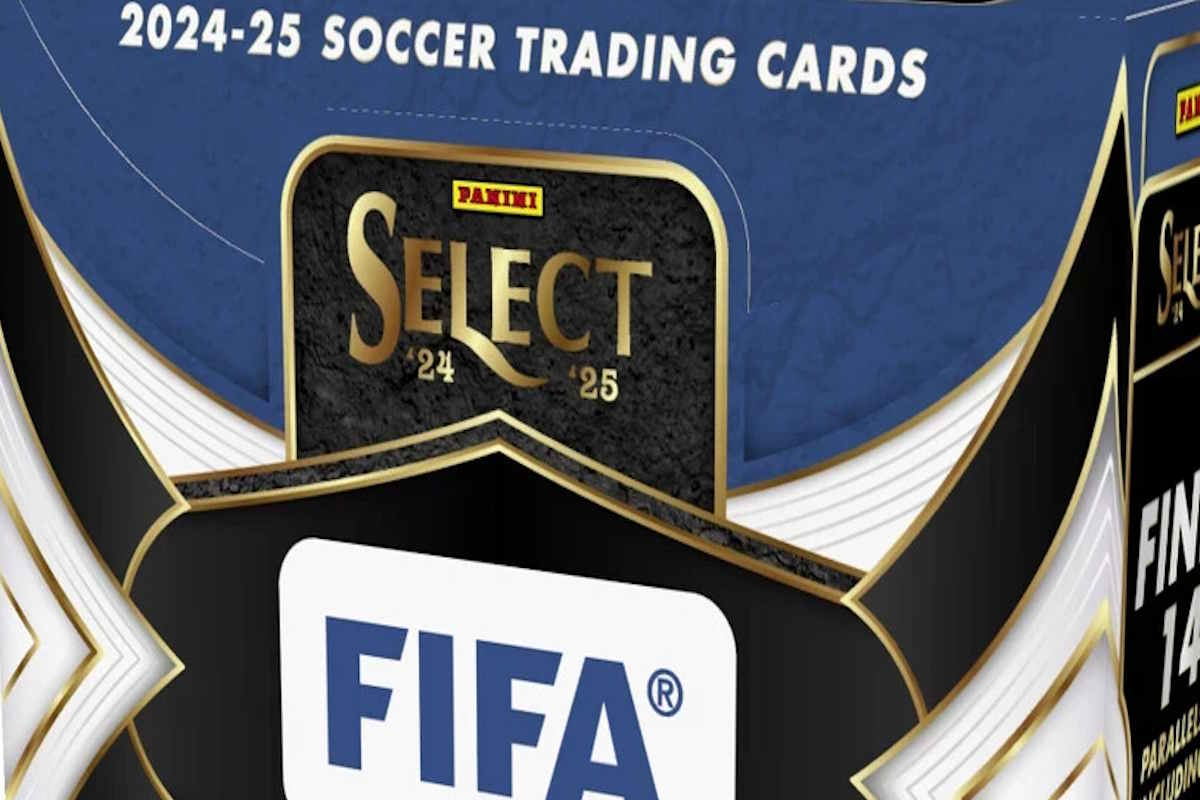

We all know it, defensive players get less love. Both in the hobby and everywhere else. Does that mean you should not invest in defensive player football cards?
Picture this: your favorite team marches out onto the field for a critical drive. The quarterback is poised and collected under pressure as he leads his team out, but there’s a catch—they’re all alone on the field.
They line up, snap a play, throw a quick slant to the outside, and the star receiver runs for an 80-yard touchdown since there is no defense to be found.
Not a very interesting game, is it?
And yet, many sports card collectors focus only on offensive players. In general, defensive players are very undervalued in the hobby.
This post will look at the differences in value between NFL stars and legends that play(ed) offense and defense and answer some burning questions.
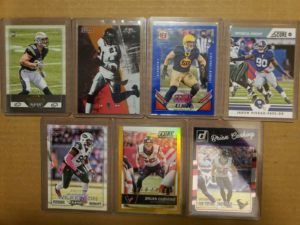
Defensive football player cards can be quite inexpensive, like this 15$ lot that featured on eBay.
There’s not one particular reason we can point to as the culprit for why NFL defensive cards hold lower value. However, a combination of several factors leads to that outcome.
For one, the NFL is the only major sport with players that only play defense. In the NBA, MLB and NHL players do both. Or they are supposed to anyway.
And that combines with our other reason: simply put, people care more about the excitement of scoring touchdowns than gettings sacks or tackles. So no matter how dominant an NFL defensive player is, he or she will never be providing the focal point of the scoring for his team (but to be fair, there was a season where it felt like JJ Watt was very close to this for the Texans).
If you’re like most casual fans, you’re much more likely to know who is the all-time NFL leader in passing yards, rushing yards, or receiving touchdowns than interceptions or tackles. Again, that’s because our fandom—the way we consume sports as an exhibition of excitement—is driven by scoring points. It is also easier, on an intuitive level, to associate scoring with helping the team win.
That said, the same mindset applies to offensive lineman, too. Many scouts consider Penei Sewell the most likely sure-fire HOF candidate from the 2021 draft class, but how many collectors do you know loading up on Sewell rookies?
In other words, there will always be a market for defensive player cards, but it will most likely always be a smaller one.
Comparing the value of offensive and defensive stars is a slightly tricky process because it feels like comparing apples to oranges, but think about this:
Lawrence Taylor is widely considered the best NFL defensive player ever. A PSA 8 of his 1982 rookie card recently sold for $148. Joe Montana, a legend in his own right but not in the GOAT conversation (anymore), was a rookie just a season earlier, and his 1981 Topps Rookie PSA 8 recently sold for $445.
See a bit of a difference? That’s over 250% more for the Montana card.
For an even more fair comparison, let’s look for two iconic players within the same set.
A PSA 9 1989 Score Deion Sanders rookie sells for about $80, while a PSA 9 1989 Barry Sanders rookie sells for about $160. Same card, same set, two debatably top-10 players on their sides of the ball, but Barry sells for 2x more than Deion.
If you look down the long line, you’ll only see more of the same.
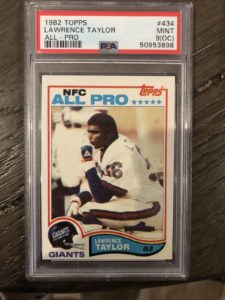
The Lawrence Taylor rookie is iconic, but not as valuable as say a Joe Montana (picture taken from eBay).
Perhaps the biggest question is if this is a trend that we can expect to flip at some point. Will the market for defensive cards ever rally?
It’s hard to say, but if I had to guess, I’d say no.
Why? For all the reasons I previously mentioned. Casual fans care much more about scoring highlight touchdowns than making important stops. If you ask a sports fan to name ten NFL stars, the names that he or she provides will probably be at least 9 out of 10 offensive players—we just think about them more.
That said, some fans have the Dick Butkus personal collection—people that love a particular team or player so much that they’re buying everything they can get their hands on of him. So it’s not unheard of, just significantly less common to have a PC of Ronnie Lott than Peyton Manning.
But before the 2020 season started, most collectors focused on “quarterbacks only.” Those two words frequently accompanied Facebook “seeking” posts, but last year collectors began to venture outside of just the signal-callers.
If this trend continues, there’s a chance that defensive players become a hot commodity, too—just don’t count on it. For that to happen, it would probably take a defensive player winning NFL with an unbelievable season—and as unlikely as that seems in such a high-powered offensive league, that still might not be enough.
READ: Investing in TJ Watt rookie cards
The prints for defensive players are not lower than the base cards from the rest of the checklists, but there are significantly fewer defensive players on most checklists.
In the end, this means fewer defensive cards.
For all the reasons outlined above, the population of defensive star cards is much lower in grading companies like PSA and BGS.
Let’s look at the PSA population for the cards used as examples earlier.
Since there are significantly fewer graded cards for the defensive stars in circulation, the fundamental laws of supply and demand dictate that this should drive a higher price for these cards. Perhaps, at some point, values climb. They might not be as popular, but they are much rarer.
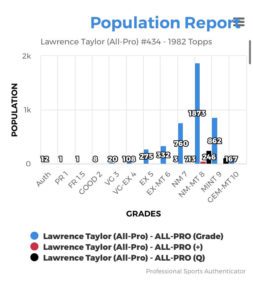
For such an iconic card, the Lawrence Taylor card has a low population report. The picture does not have the most up-to-date numbers (picture taken from PSA).
The answer to this question always depends on personal preference. So, collect what makes you happy. For example, if your favorite player is a left outside linebacker, load up on his cards!
When it comes to investing, that is a different story.
For one, there’s a solid chance that defensive cards will never rally in value—at least to equal levels with NFL offensive stars. But, there’s also far less of them graded, so the scarcity should ensure they don’t ever fall in value much, either.
The population reports for cards are an essential tool for investment. If you want to invest in a good defense, consider buying graded/gradable cards of older players. Here is a list of some of the best defensive players to collect. Especially if you can get your hands on high-graded slabs:
| Player | Important Rookie Card | Estimated Value for Highest Grade With Price Available | Population for Highest Grade |
| Dick Butkus | 1966 Philadelphia | PSA 8 – $5,200 | PSA 8 – 13 |
| Mean Joe Greene | 1971 Topps | PSA 8 – $2,000 | PSA 8 – 263 |
| Ray Lewis | 1996 Bowmans Best Atomic Refractor | PSA 10 – $11,500 | PSA 10 – 20 |
| Bob Lily | 1963 Topps | PSA 8 – $2,850 | PSA 8 – 90 |
| Lawrence Taylor | 1982 Topps | PSA 10 – $37,500 | PSA 10 – 74 |
| J.J Watt | 2011 Topps | PSA 10 – $199 | PSA 10 – 366 |
| Reggie White | 1985 Topps USFL | PSA 9 – $500 | PSA 9 – 529 |
As you can see, some of the older cards do well because of the low populations. So these cards will have low populations and age on their side, which should help them climb in value at a higher rate than modern defensive stars.
To get the equivalent with modern cards, you will need to spring for short prints and refractors. But as you can see from the Ray Lewis card, it can be well worth it.
On the face of it, defensive players are a less lucrative investment than their offensive counterparts. However, the low populations of some of the more desirable cards can change the equation. So, if you want a good return for your investment, try to get your hands on a hall of fame (or future HOF) with a low population.
The SAD story of Collectable. What went wrong? (The Downfall Fractional Sports Card Investing)
what was Panini doing? 🙄
I compared sports card prices from the big sellers to save YOU money
Is GameStop buying PSA? (the truth!)
I ripped an entire case of Phoenix Football (BIG win or MASSIVE loss?)
Make an extra 30% PROFIT on eBay with this sports card hack
What's your biggest trading card regret? This is a safe space. 🤣
I used ChatGPT to invest in sports cards (and make this thumbnail lol)

BCW Thick Card Toploaders 197 Pt. 10 per pack

BCW Thick Card 59 Pt. Toploaders. 25 per pack

BCW 20 Pt. Toploaders. 25 per pack
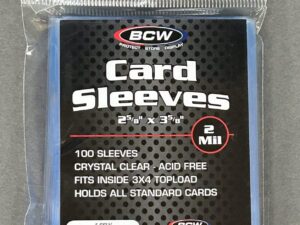
BCW Standard Card Sleeves. 100 per pack
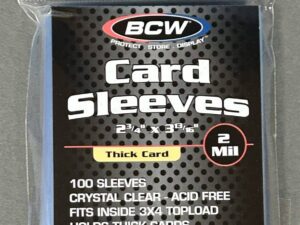
BCW Thick Card Sleeves. 100 per pack

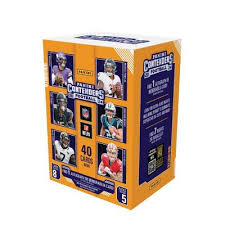
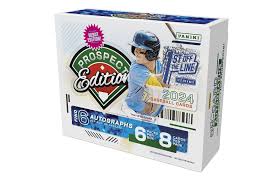
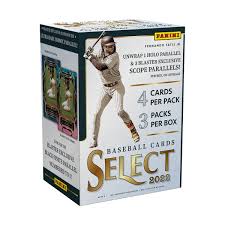
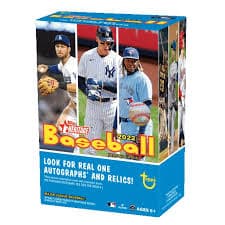
2022 Topps Heritage Baseball Blaster Box Configuration: 7 Packs per Box – 9 Cards per Box. Plus 1 extra pack.
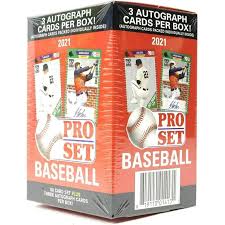
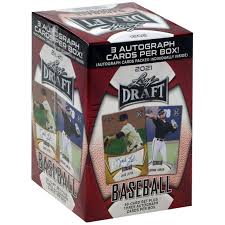
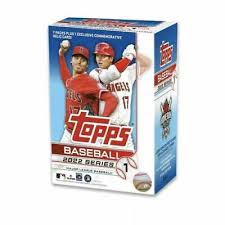
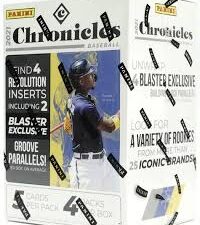
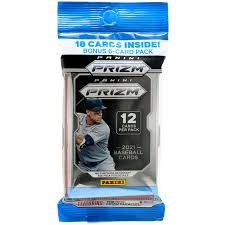
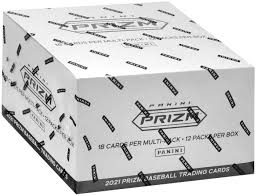

© Copyright 2025 - All rights reserved Cardlines.com / Media Techs LLC - Sports Card News, Reviews, Releases and BREAKS - #thehobby.
Important: When you click on links to various merchants on this site and make a purchase, this can result in this site earning a commission. Affiliate programs and affiliations include, but are not limited to, the eBay Partner Network.
I opened a sports card mystery box and found something AWESOME inside
Cardlines 20 hours ago